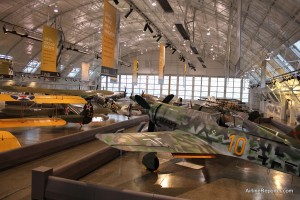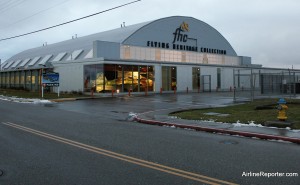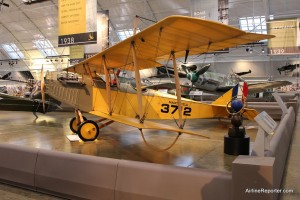Around the world there are a lot of old war birds on display for many to enjoy. However, there aren’t too many that are kept in original condition and are still flyable. This is one of the things that makes the Flying Heritage Collection (FHC) stand out from others. Recently I was able to take a visit to the facility to check it out — sadly I had never been.
One of the first things I noticed when going inside the old hangar, housing the aircraft, was the smell. This is something that will not come through in the photos, but it is an important part of the experience. You can smell the fluids of the aircraft. When visiting most museums there is no smell since the aircraft have not flown in years. It feels like you are walking into a full operational hangar — and in a way you are.
Of course the smell is not the only special part of the facility, you have got to love those planes. At first site, it might seem the Flying Heritage Collection is about showing off a very slick collection of aircraft, but it is not only about the story of the planes, but also the story of technology. Finding any of these aircraft is a hard thing to do, but to find them in flying form is extremely rare. The FHC works hard to refurbish the aircraft with as many original parts as possible. Somethings like wiring needs to be updated according the FAA, but they will re-wire the plane and wrap them all in the original fabric to keep to as close to rolling out of the factory as possible.
There are two aircraft in the collection that are flyable, but are not flown. The Focke Wulf D-13 Dora and the Nakajima Ki-43-1B Hayabusa Oscar are the only examples of their kind left. The FHC doesn’t want to fly them for fear that they might be damaged or even worse crash and then there would be none left for the world to enjoy.
It is a bit surprising, when first walking into the hangar, you do not see planes, but tanks. These are a new additions to the collection and just like the airplanes, they both work. These are a new addition to the facility and were added last Memorial Day. The Soviet T-34 and a German Jagdpanzer 38(t) obviously aren’t planes, but they help to tell the story of updates in technology produced through war. Just like the airplanes, these tanks are fully functional and are able of shooting.
Taking a look at the airplanes is quite exciting, but the FHC does a good job putting the aircraft into perspective. As you would expect in a facility like this, every airplane has a place card explaining the basics of the aircraft, but they also give a history of that individual airplane, which was quite interesting. On the walls around the facility are story boards about how each country interacted with the aircraft and gives a bit more historical significance. Hanging from the ceiling are banners that explain when new technologies were discovered. For example, there was a banner that explained in 1942 ejection seats were invented and increased the odds of a pilot’s survival. It is interesting to compare the dates from the banners with the dates the aircraft were produced.
When I asked about how much each aircraft cost, I was told “a lot.” I would imagine that “a lot,” might be an understatement, it can’t be cheap to keep the planes in the condition that they are. Cost of the aircraft really isn’t a huge issue, since the facility is owned by Paul Allen, co-founder of Microsoft and chairman of Vulcan. On top of giving a lot of his money away for good causes, he also has a lot of fun toys. Luckily for us, he has decided to share his collection of warbirds with the public through his non-profit organization, Friends of Flying Heritage that supports the collection.
The collection was open to the public in 2004 and was housed in Arlington, WA (about an hour north of Seattle, WA). In 2008 they moved to their current facility right on Paine Field. Right now there is only one more slot left for another plane and I was told they might have to start storing aircraft in Arlington and rotate them through the collection. Although it would be better to see all the collection at any given time, this also means you might be able to catch one flying between the two airports, which is always a good thing.
If you haven’t done so already, head on over to the Flying Heritage Collection and check them out. Tickets are only $12 and less for kids and seniors. Also be sure to make it to Paine Field for their Free Fly Days when you can watch them fly for free over the summer. They will fly the planes 10 different days over the summer, kicking it off during General Aviation Day.
I will be adding this write up in the Aviation in Seattle page, it should make a great addition. A special thanks to the Flying Heritage Collection and Snohomish County Tourism Bureau for setting up my visit.
MORE FUN STUFF:
* 29 Photos of my visit to the collection
* See photos of the planes flying from Liz Matzelle (be sure to catch the one with 787 ZA005 and the spitfire)
* Flying Heritage Collection Facebook page
* Build your own warbird on their website
* Photos of the tanks firing at Paine Field last year from the SEattle PI



We visited a couple of weeks ago while we were in Seattle. Its a great way to complete a day after doing the Boeing Tour/Future of Flight. The collection is relatively small, but the level of detail and information that they have on each piece is incredible. Well worth the $12 each that my wife and I paid.